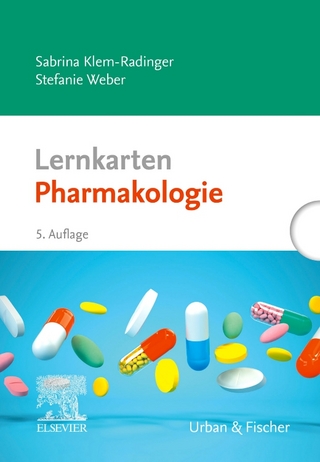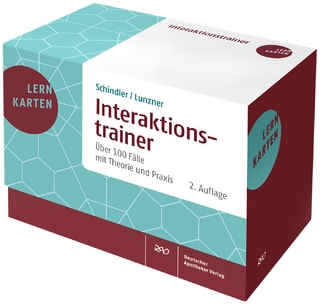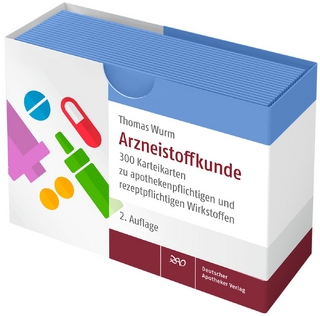
Math and Dosage Calculations for Health Care Professionals
McGraw Hill Higher Education
978-0-07-746038-9 (ISBN)
- Titel ist leider vergriffen;
keine Neuauflage - Artikel merken
McGraw-Hill has a clear digital advantage in math & dosage calculations with ALEKS Prep, to prepare students with a strong math foundation, and Connect, which includes math, terminology, dosage calculations, interactive exercises and an eBook- a complete course solution. 3D Animations covering pathophysiology and pharmacology as well as a newly filmed Medication Administration Video series are also in Connect with pre -, during - and post-assessment. The 4th edition of Booth has a redesigned table of contents, adding a new chapter of safe medication administration, and breaking larger chapters into smaller, more manageable chapters.
Math and Dosage Calculations for Health Care, 4th edition TABLE OF CONTENTSUNIT ONE: Chapter 1: Fractions1.1Producing Fractions and Mixed Numbers In the Proper Form*Common Fractions*Mixed Numbers1.2Producing and Identifying Equivalent Fractions1.3Determining the Simplest Form of a Fraction1.4Finding the Least Common Denominator1.5Comparing the Value of Fractions1.6Adding Fractions1.7Subtracting Fractions1.8Multiplying Fractions1.9Dividing FractionsHomework AssignmentChapter ReviewChapter 2:Decimals2.1 Writing and Comparing Decimals2.2 Applying the Rules for Rounding Decimals2.3 Converting Fractions into Decimals2.4 Converting Decimals into Fractions2.5 Adding and Subtracting Decimals2.6 Multiplying Decimals2.7 Dividing DecimalsHomework AssignmentChapter ReviewChapter 3:Relationships of Quantities: Percents, Ratios, and Proportions3.1 Percents*Converting Values To and From a Percent3.2 Ratios*Converting Values To and From a Ratio3.3 Proportion*Writing Proportions3.4 Using Proportions to Solve for an Unknown*Means and ExtremesHomework AssignmentChapter ReviewUNIT TWO: Chapter 4:Metric System4.1 Metric System*Metric Notation4.2 Converting Within the Metric SystemHomework Assignment Chapter ReviewChapter 5:Other Systems of Measurement5.1 Apothecary System*Apothecary Notation5.2 Household System*Units of Measure*Household Notation5.3 Equivalent Measurements for the Metric, Apothecary, and Household SystemsHomework AssignmentChapter ReviewChapter 6:Converting Units6.1 Writing Conversion Factors from Equivalent Measurements 6.2 Converting Units Using the Proportion Method6.3 Converting Units Using Dimensional AnalysisHomework AssignmentChapter ReviewChapter 7:Temperature and Time7.1 Converting Temperature7.2 Converting TimeHomework AssignmentChapter Review UNIT THREE:Chapter 8: Equipment for Dosage Measurement8.1 Enteral Medication Administration Devices*Medicine Cups*Droppers*Calibrated Spoons*Oral Syringes*Other Equipment for Enteral Medications8.2 Parenteral Medication Administration Devices*Standard Syringes*Safety Syringes*Prefilled Syringes*Insulin Syringes*Tuberculin Syringes*Syringes for Established Intravenous Syringes *Large-Capacity Syringes*Ampules, Vials, and Cartridges*Preparing the Syringe*Needle Gauge and LengthHomework AssignmentChapter ReviewChapter 9:Interpreting Medication Orders9.1 Medical Abbreviations*Roman Numerals*Combining Roman Numerals9.2 Components of a Medication Order 9.3 Medication Administration RecordsHomework AssignmentChapter ReviewChapter 10:Interpreting Medication Labels and Package Inserts 10.1 Information on Medication Labels and Package Inserts*Drug Name*Form of the Drug*Dosage Strength*Combination Drugs*Total Number or Volume in Container*Route of Administration*Warnings*Storage Information*Manufacturing Information*Information About Reconstituting Drugs*Package Inserts10.2 Label Information Related to Medication Routes*Oral Medications*Parenteral Medications*Medications Administered by Other RoutesHomework AssignmentChapter ReviewChapter 11:Safe Medication Administration11.1 Prescription/Medication Order11.2 Verbal Orders11.3 Safe Medication Order Transcription11.4 Error-Prone Abbreviations and Symbols11.5 Three Checks of Medication Administration11.6 The Rights of Medication Administration11.7 Observation11.8 Patient Teaching*Medication Reference MaterialsUNIT FOUR: Chapter 12:Methods of Dosage Calculations12.1 Information Needed for Dosage Calculations12.2 Methods of Dosage CalculationHomework Assignment Chapter ReviewChapter 13:Oral Dosages13.1 Tablets and Capsules*Calculating Dosages for Tablets and Capsules*Crushing Tablets or Opening Capsules13.2 Liquid MedicationsHomework AssignmentChapter ReviewChapter 14:Parenteral Dosages and Other Medication Administration Forms14.1 Calculating Parenteral Dosages in Solution*Syringe Sizes14.2 Medications Expressed in Percent or Ratio Format14.3 Reconstituting Powdered Medications14.4 Other Medication Administration Forms*Intradermal Injections*Inhalants*Drops, Sprays, and Mists*Vaginal and Rectal Medications*Topical Medications*Transdermal SystemsHomework AssignmentChapter ReviewChapter 15:Intravenous Calculations 15.1 IV Solutions*IV Labels*IV Concentrations*Compatibility15.2 IV Equipment*The Primary Line*Secondary Lines (Piggyback)*Monitoring IV Equipment*Peripheral and Central IV Therapy15.3 Calculating Flow Rates*Adjusting Flow Rates 15.4 Infusion Time and Volume*Calculating Infusion Time*Calculating Infusion Volume15.5 Intermittent IV Infusions*Secondary Lines (Piggyback)*Intermittent Peripheral Infusion Devices*Preparing and Calculating Intermittent InfusionsHomework AssignmentChapter ReviewUNIT FIVE: Chapter 16:Preparation of Noninjectable Solutions16.1 Preparation of Solutions*Percent Concentration*Preparing Percent Solutions and Solids16.2 Preparing a Dilution from a ConcentrateHomework AssignmentChapter ReviewChapter 17:Calculations for Special Populations17.1 Factors That Impact Dosing and Medication Administration*Pharmacokinetics - How Drugs are Used by the Body*Working with Special PopulationsoPediatric PatientsoGeriatric Patients17.2 Dosages Based on Body Weight*Ensuring Safe Dosages17.3 Dosages Based on Ideal Weight17.4 Dosages Based on Body Surface Area (BSA)*Calculating a Patient's BSA17.5 Daily Maintenance Fluid Needs (DMFN)Homework AssignmentChapter ReviewChapter 18:High-Alert Medications18.1 Insulin*Types of Insulin*Timing of Action*Insulin Syringes*Insulin Combinations18.2 Identifying Information on Heparin Label18.3 Calculating Subcutaneous Heparin Dosages18.4 Calculating Heparin Bolus Dosage and IV Rate Homework AssignmentChapter ReviewChapter 19:Critical Care IV Calculations19.1 Hourly Flow Rates For Dosage Per Time Infusions *Dosage Per Hour*Dosage Per Minute19.2 IV Flow Rates Based on Body Weight Per Time19.3 IV Flow Rates for Titrated MedicationsHomework AssignmentChapter ReviewAppendix A:Comprehensive EvaluationAppendix B:Answer KeyGlossaryCreditsIndexReference Cards
| Verlagsort | London |
|---|---|
| Sprache | englisch |
| Maße | 226 x 271 mm |
| Gewicht | 1471 g |
| Themenwelt | Sachbuch/Ratgeber ► Gesundheit / Leben / Psychologie |
| Medizin / Pharmazie ► Gesundheitswesen | |
| Medizin / Pharmazie ► Medizinische Fachgebiete ► Pharmakologie / Pharmakotherapie | |
| Medizin / Pharmazie ► Pflege | |
| ISBN-10 | 0-07-746038-3 / 0077460383 |
| ISBN-13 | 978-0-07-746038-9 / 9780077460389 |
| Zustand | Neuware |
| Haben Sie eine Frage zum Produkt? |
aus dem Bereich


